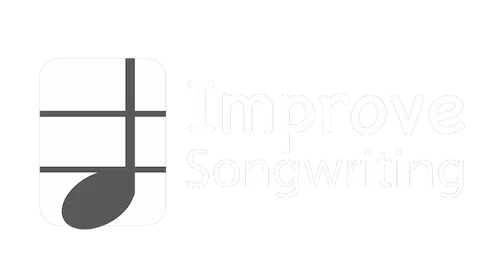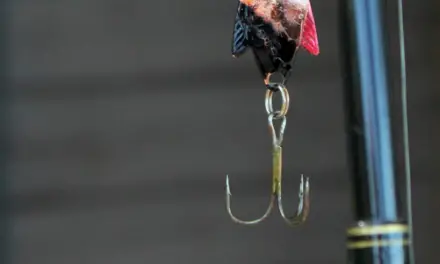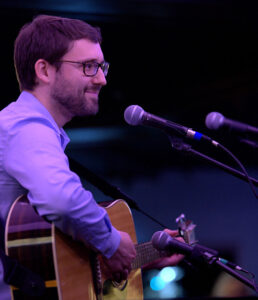Have you ever sat down with a guitar or keyboard, hoping to write the perfect song, only to get stuck figuring out how to start your verse?
Well, you’re not alone! When you consider the big picture of song structure and the 7 different parts of a song, your verse is the fundamental building block that supports everything else. The verse is where your story takes shape, the scene unfolds, and the listener gets pulled into your world.
But with all that said, the importance of the verse is one reason it’s so hard to write one that you’re happy with! So, in this guide, I’ll answer the question “what is a song verse?” and share some of my favorite tips for making a great one.
Improve your songwriting by mastering piano.
$49
ONLY
What is a Song Verse, Exactly?
A song verse is a repeating section of a song with different lyrics each time that drives the narrative forward. Where the chorus in a song mostly repeats the same lyrics each time it appears – and comments on or reinforces the song’s theme – a verse sets the tone for your whole song.
Think of a song verse as the “what” to a chorus’s “why.” The verse is where you’ll introduce the world of your song, the characters inhabiting that world, the events that are happening, and the emotions those characters are feeling.
Again, in most pop and rock songs, the verse has new lyrics each time it appears. You should also note that the verse usually appears before the chorus in a song (with some notable exceptions, like “She Loves You” by the Beatles). So think of each verse as a chapter that, combined, make up the full narrative of your song.
(And as an aside, the meaning of the word “verse” in general hails back to poetry and means “a line of metrical writing.” So, song verses are very much in the tradition of written lines with rhythm and meter.)
Getting to Know the Verse in a Song
We’ve established that a song verse can be thought of as the “what” in a song, but it’s more than that. Verses keep the song grounded, while also allowing room for creativity and variety. You have a lot of latitude in how you tell your story in the verse – by comparison, the chorus usually needs to be more structured and repetitive so that it’s easy to sing along to.
So, where does the verse fit into a song, exactly? You’ll find the verse as a key component of common song structures. For example, the most popular song structure is verse – chorus – verse – chorus – bridge – chorus. For longer songs, you may choose to add another verse and chorus – or in some cases, you may include a pre-chorus or post-chorus in the song. Lastly, some songs will have an intro or outro that are distinct from the verse.
Another important consideration with the verse is how long it will be. In Western music, most song sections have bars divisible by four, such as four, eight, twelve, or sixteen. That doesn’t mean your verse can’t have an odd number of bars, but an even number is more common.
When considering how long a verse should be, you should note that most songs today are no more than 3.5 minutes in length (see my article on “how long should a song be” for more information on that.) As a result, there usually isn’t enough room to have more than two or three verses in your song. If the standard tempo of a song is 120 BPM, but your ballad is 60 BPM, then your verse will likely need to be shorter to fit.
But beyond these more technical considerations, you should always remember that a verse tells the story.
A Few Examples of Real Song Verses
There are countless fantastic songs whose verses are as iconic as their choruses, if not more so!
Take the song “Hotel California” by The Eagles, for example. Many of the most memorable lines from the song are found in its verses, which tell the story of the narrator stopping for the night at a place called “Hotel California.”
Individual lines from the song add a lot of color to the story and get in the mind of the narrator, like:
“And I was thinkin’ to myself / ‘This could be heaven or this could be Hell.’ “
Or
Her mind is Tiffany-twisted / She got the Mercedes Benz
It quickly becomes clear that the song is about materialism and excess in Los Angeles, or California, or even America more broadly – and the idea that this luxurious “hotel” you freely enter is nearly impossible to leave.
Each time you hear the chorus, you can detect the ambivalence of the narrator’s experience with this rich lifestyle. Because of how the verse established the narrator’s wariness with Hotel California, we as listeners no longer take the chorus’s glitzy exterior at face value. It really reinforces the theme that not all is right in this world of affluence and opulence.
I also really like the example of “Someone Like You” by Adele. In the verses, she establishes a tone of “Yay, I’m happy for you because you found someone you love,” but in the pre-chorus and the chorus, it’s abundantly clear that she’s wistful and hurt once again by this lost love, after the recent discovery that he’s settled down and is no longer a romantic option for her.
It’s also interesting to note that while Hotel California is more of a story song with events taking place in sequential order (albeit in an extended analogy), Adele’s song is almost entirely a reflection of her narrator’s own internal thoughts. We don’t even know if the target of the song even hears any of the things she’s saying, or if the narrator is simply processing the news of her love’s recent marriage by herself in song form.
All that to say, you have a lot of latitude in how you craft a verse that supports the intended story, theme, character, and mood of your song!
5 Tips to Write a Great Verse
Writing a great verse is more of an art than a science. Whether your verse works or not is really about how it makes you and your listener feel. In combination with the music you write, does your verse effectively convey both the story information and the vibe you want it to?
With that in mind, here are a few tips on writing a great verse. Mix and match these as needed whenever you decide to work on your next verse.
Tip 1: Start with the Mood
Before diving into the lyrics you want to write, try starting out by thinking about the mood you want to create. Is your verse setting a somber scene, like a rainy day reflection? Or is it more upbeat, like the excitement you feel on a Friday night out?
The mood is the glue for your verse, guiding your choice of imagery, melody, rhythm, and instrumental accompaniment.
How do you define mood for a song? Try closing your eyes and imagining a movie scene that evokes your song’s theme. Picture what’s happening in your mind’s eye, including the colors, the emotions, the setting, even the smells. Then, write out that vivid imagery in lyrical form to bring your verse to life.
Tip 2: Grab Attention Right Away
The first line of your verse needs to grab attention. No pressure, right?
But really, starting with something intriguing makes all the difference! Maybe you can use an unexpected visual, a question, or a feeling that’s instantly relatable. Here are a few examples:
- “The neon lights were flickering like broken dreams”
- “Do you remember the first time we stayed up till dawn?”
- “I woke up with your song still echoing in my head”
These lines paint a picture or evoke a memory, making your listeners want to hear more.
Tip 3: Develop the Story
Once you’ve got your listener’s attention, it’s time to build on it. Use your verse to reveal key exposition: who’s involved, what’s happening, how they feel about it, and so on.
Remember that famous writer’s mantra of “show, don’t tell” here. Use concrete details that help the listener visualize the scene and feel the feelings at a more visceral level. Instead of saying, “He was sad,” describe the character’s sadness: “The rain tapped on his window as he stared at the empty street below.”
Verses are also a good time to build tension or set up questions that the chorus can answer. For example, if your song is about a relationship falling apart, the verse can introduce the cracks (i.e. the subtle hints that all isn’t right in this character’s life).
Then, the chorus can explode into the open with the character’s actual feelings about what’s happening!
Tip 4: Keep It Conversational
If you want your audience to connect with your song, keep your verses conversational and natural. Writing a verse can sometimes feel like having a one-on-one chat with a close friend.
Don’t be afraid to use everyday language. This makes the song feel more personal and relatable. Imagine telling the story across the table from someone you trust… what would you say, and how would you say it?
Like all “rules” in songwriting, there are times when it makes sense to use more jargon or complex language – but more often, the use of simple language will appeal to a wider base of listeners and make it easier to resonate with the words you’ve written.
Tip 5: Play with Structure
Verses tend to have a loose structure compared to a chorus, which is designed to repeat both lyrics and music. This is a good thing, because it means you have a ton of freedom in your verse to experiment with elements like rhythm, rhyme, length, meter, and even melody.
Maybe your first verse has four lines, each rhyming at the end, but in the next verse, you switch up the pattern to keep things fresh. If it flows naturally and fits the mood you established back in Tip 1, then whatever you want to do is fair game!
Leading into the Chorus
Now that you’ve written your verse, it’s important to take note out of how it fits into the broader song structure, including the chorus or bridge in a song. The end of your verse should hint at what’s coming next. That may be a question, a change in the story, or an emotional peak that prepares the listener to hear the chorus.
This is called the “pre-chorus lead-in.” Think of it as holding your breath before the big moment – it makes the release (the chorus) that much more satisfying!
Similarly, your later verses should make sense in the context of your repeated choruses, and also set up the reinforcing or contrasting element of a strong bridge. But of course, when you’re first starting to write a verse, I would just focus on making it as good as possible before worrying about the rest of the song sections.
After all, writing a great verse could lead you to an even greater chorus!
What is a Song Verse Wrap-up
I hope this guide on song verses was everything you needed it to be!
Like with anything in songwriting, the more you practice writing verses, the easier it becomes, so don’t be afraid to write a few drafts. If I’m being real with you, the magic usually happens after you get those first clunky ideas out of the way – you should feel super lucky if it happens on the first try.
To master verse writing, I would also listen to your favorite songs and focus only on the verses to see how they’re structured, what imagery they use, and how they build toward the chorus.
The verse is where your creativity can shine and where you can add details that make your song uniquely yours. In the end, have fun experimenting and remember: there are virtually no hard-and-fast rules to songwriting. The more you trust your instincts, the more authentic your verses will be.
Happy songwriting!
If you want to get better at writing memorable music that resonates, I recommend that you get familiar with an instrument like piano. The more you know about how great songs are constructed sonically, the easier it will be for you to create a masterpiece yourself. Check out Piano for All below to get started!
Improve your songwriting by mastering piano.
$49
ONLY

![What is a Song Verse? [Plus 5 Tips to Write a Great One!]](https://improvesongwriting.com/wp-content/uploads/2024/11/What-is-a-Song-Verse.jpg)

![What Is a Pre-Chorus? [And How to Write One!]](https://improvesongwriting.com/wp-content/uploads/2024/11/What-is-a-Pre-Chorus-440x264.jpg)





